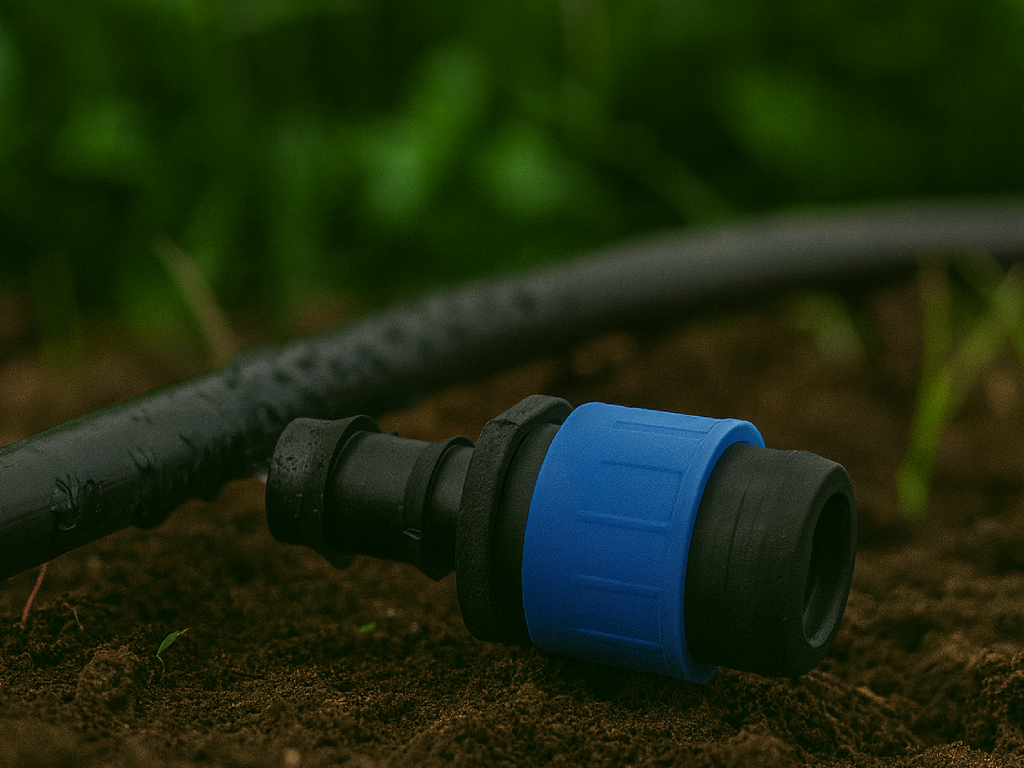
What Are Drip Irrigation Fittings? Essential Components for Efficient Watering
In modern agriculture, achieving sustainable yields and optimizing water use requires more than just selecting the right irrigation method—it also means choosing the right components. Drip irrigation systems are widely used to deliver water directly to the plant roots in a controlled, low-pressure flow. But for the system to function reliably and efficiently, high-quality drip irrigation fittings are a must.
In this article, we’ll explore the types and functions of drip irrigation fittings, why they’re important, and how they can even integrate with sprink systems in certain agricultural applications.
What Are Drip Irrigation Fittings?
Drip irrigation fittings are essential connectors and accessories used to assemble, guide, regulate, and secure irrigation lines. Though they may seem like minor components, they play a major role in maintaining pressure consistency, preventing leaks, and directing water exactly where it’s needed.
They are used in both surface and subsurface irrigation setups and are chosen based on field design, crop type, and water pressure requirements.
Common Types of Drip Irrigation Fittings
Here are some of the most commonly used drip fittings:
Tees and Elbows
Used to change direction or branch off lines in the irrigation layout.
Couplers (Straight Connectors)
Join two lengths of pipe in a straight line.
End Plugs
Seal the ends of drip lines to prevent water loss.
Valves
Control water flow in specific zones; can be manual or automatic.
Saddles (Take-Off Saddles / Priz Collars)
Allow side connections from mainlines to lateral drip lines, especially on PE pipes.
Filters
Remove debris and particles, preventing emitter clogging and system damage.
Drippers / Emitters
Deliver water at a precise flow rate to individual plants.
Why Use High-Quality Drip Irrigation Fittings?
- Prevent Leaks and Pressure Drops: Poorly fitted or low-quality components can lead to inefficiency and water loss.
- Protect System Longevity: Durable fittings extend the life of your entire irrigation system.
- Ensure Compatibility: Proper sizing and material ensure seamless installation.
- Reduce Clogging Risks: Clean, well-fitted parts improve overall flow consistency.
- Support Automation and Expansion: Easily integrate with other technologies like pressure regulators, timers, or even sprink systems.
Integration with Sprink Systems
Although drip irrigation and sprink systems serve different purposes, they can often work in tandem for maximum efficiency. For example:
- Greenhouses may use drip systems for plant rows and sprinks for walkways or perimeter watering.
- Sprink systems are ideal during early plant establishment, while drip takes over for water conservation.
- Shared mainlines can support both systems when designed with appropriate fittings.
This is why drip irrigation fittings must often be compatible with both drip and sprink systems, offering flexibility for hybrid setups.
STF Drip Irrigation Fittings
STF offers a complete line of durable and high-performance drip irrigation fittings made from UV-resistant, chemical-resistant plastic materials. Our products are designed for:
- Compatibility with all standard PE pipes
- Fast and secure installation
- Resistance to environmental wear and tear
- Full adaptability to field needs and pressure levels
Whether you need fittings for greenhouses, open fields, or combined drip–sprink systems, STF ensures every drop counts.
Conclusion: Great Irrigation Starts with the Right Connections
The success of a drip irrigation system relies not just on the mainline or emitters, but also on the small parts that hold everything together. Quality drip irrigation fittings ensure the system performs optimally, water is delivered efficiently, and long-term durability is maintained.
And in operations where sprink systems are also in use, compatibility and integration become even more critical. STF provides the precise components you need for both conventional and advanced irrigation strategies.

